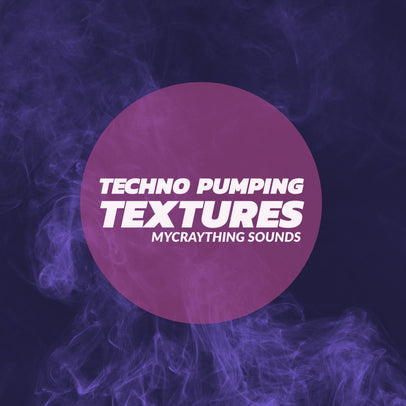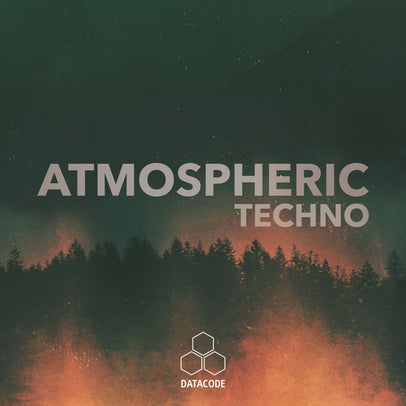Ambient Techno sits at the intersection of two sonic worlds: the rhythmic pulse of techno and the atmospheric depth of ambient music. It’s a genre that favors subtle evolution over big drops, space over saturation, and emotional resonance over structural complexity.
In recent years, Ambient Techno has resurfaced in underground clubs, late-night DJ sets, and experimental music scenes—often blurring the lines between dancefloor functionality and meditative listening. Whether you're building long-form mixes or cinematic soundscapes, the genre offers a canvas for deep, textural exploration.
In this article, you'll learn how to:
-
Design pads and textures that create immersive environments
-
Build drum patterns that complement, not dominate, the atmosphere
-
Use effects, modulation, and space to craft hypnotic, evolving arrangements
-
Apply minimalist mixing techniques to retain clarity and depth
-
Choose the right tools, synths, and samples to inspire your next Ambient Techno track
If you're ready to slow things down and dig into a more introspective, layered sound, this guide is your starting point.
Understanding the Ambient Techno Aesthetic
Ambient Techno isn’t just a genre—it’s a mood, a space, and an experience. Unlike more aggressive forms of techno, it doesn't rely on heavy drops or constant rhythmic energy. Instead, it builds a world through subtle repetition, evolving textures, and immersive spatial design.
A Brief History
Ambient Techno emerged in the early ‘90s, shaped by pioneers like Basic Channel, Biosphere, and Deepchord. These artists fused dub-influenced rhythms with washed-out pads, analog synths, and lo-fi textures—creating tracks that felt more like environments than traditional songs.
Today, the sound has evolved, finding a new home in labels like Semantica, Silent Season, and Hypnus Records, where producers continue to push the boundaries between ambient, minimal, and techno.
Core Characteristics
-
Tempo: Typically ranges from 90 to 125 BPM, slower than standard techno, allowing more room for sound to breathe.
-
Repetition: Loops are long and hypnotic, often with gradual modulations rather than sudden changes.
-
Textures: Pads, noise layers, and atmospheres are just as important as drums—if not more.
-
Space: Reverb, delay, and stereo imaging are central to the emotional and physical experience.
-
Emotion: Ambient Techno tracks often evoke introspection, calm, or mystery rather than aggression or intensity.
In short, it’s music designed as much for the body as for the mind.
The Role of Texture in Ambient Techno
In Ambient Techno, texture is everything. While rhythm and melody provide structure, it's the textures—those evolving layers of sound that sit just beneath the surface—that give your track depth, emotion, and atmosphere. Texture isn’t about complexity; it’s about detail, movement, and space.
What Is Texture in Music Production?
Texture refers to the sonic “fabric” of a track—what fills the space between percussive hits and melodic lines. It can be:
-
Subtle field recordings
-
Evolving synth noise
-
Soft granular drones
-
Warm analog hiss or vinyl crackle
-
Shifting harmonic overtones
In Ambient Techno, these elements aren’t just decorative—they define the mood. A well-crafted texture can make a simple four-note pad feel deep and alive.
How to Create Evolving Textures
To build organic, evolving textures, consider these techniques:
🔹 Granular Synthesis
-
Chop a long pad or field recording into tiny grains and rearrange them in constantly shifting patterns.
-
Tools like Granulator II, Quanta, or Padshop are ideal.
🔹 Field Recordings & Foley
-
Record natural environments (rain, wind, room tone, city ambience) or subtle mechanical sounds.
-
Layer, filter, and stretch them to create sonic backdrops that feel real and immersive.
🔹 Noise and Modulated Layers
-
White or pink noise run through filters and LFOs creates smooth motion.
-
Add movement with slow automation on pitch, filter cutoff, and pan.
🔹 Resampling & Reprocessing
-
Take your existing textures, bounce them, then reprocess with granular effects, distortion, or reverse delay.
-
This adds unpredictability and analog character.
Keep in mind: textures should breathe, not dominate. Think of them as the atmosphere surrounding your main elements—present, but not overwhelming.
Designing Pads That Fill Space Without Overcrowding
Pads are the emotional core of Ambient Techno. They don’t just fill out the frequency spectrum—they define the mood and depth of your track. But in a genre that values space and subtlety, your pads need to be carefully crafted to enhance the mix without overwhelming it.
Sound Sources and Synthesis Techniques
Start with the right tool. The most effective pads often come from analog-style synths, granular engines, or layered samplers.
Recommended tools:
-
Ableton Wavetable – Smooth, modulated pads with plenty of movement
-
Arturia Pigments – Great for hybrid synthesis and organic textures
-
u-he Zebra or Diva – Rich analog warmth with flexible modulation
-
Omnisphere / Padshop / Vital – Excellent for cinematic or evolving pads
Sound design tips:
-
Start with a simple waveform (sine, triangle, saw) and stack two to three voices with slight detune.
-
Use slow attack and long release to let the pad bloom and fade naturally.
-
Avoid too much low-end—high-pass filter your pads to make room for bass and kick.
Movement and Modulation
Pads in Ambient Techno rarely stay static. Instead, they slowly shift and breathe across the timeline.
Create depth with:
-
LFOs on filter cutoff, pan, and pitch (set to very slow rates)
-
Envelope followers to trigger subtle changes in response to other elements
-
Macro automation across several parameters over the course of the track
-
Reverb and delay tails that evolve dynamically (automate send levels and feedback)
You can also layer multiple pad sounds with different modulation settings to create evolving soundscapes that remain balanced.
The goal: pads that move, not just play.
Drum & Percussion in Ambient Techno
While drums in Ambient Techno are usually subtle and minimal, they still play a critical role in grounding the track. The challenge is to add rhythm without disrupting the immersive feel—your drums should support the atmosphere, not overpower it.
Kick Drums: Soft, Warm, and Subtle
-
Choose low-passed, rounded kicks with soft transients. Avoid sharp, punchy EDM-style kicks.
-
Layer a low sine wave or sub under a high-passed kick sample to add depth without impact.
-
Consider using tape saturation or transient shapers to smooth out the attack.
Think of the kick more as a heartbeat than a punch—it gives the track flow and weight, not drive.
Percussion: Less Is More
-
Use minimalist hits like distant claps, brushed snares, or filtered rimshots.
-
Add shakers, noise bursts, or short FX tails for movement and swing.
-
Pan percussive elements subtly to create width and dimension.
Avoid busy drum patterns—repetition and subtle changes are more effective in this genre.
Rhythmic Texture Instead of Full Groove
In some Ambient Techno tracks, traditional drums are barely present. Instead, rhythmic texture comes from:
-
Looped field recordings with subtle percussive elements (e.g., footsteps, clocks, machinery)
-
Modulated noise bursts that mimic hat patterns
-
Delay feedback and granular percussion creating randomized movement
If you do use a more defined rhythm, keep it understated, leaving room for pads and textures to shine.

Arrangement & Space – Letting the Track Breathe
In Ambient Techno, how you arrange your elements is just as important as the sounds themselves. The structure of your track should guide the listener through a slow, immersive experience—more like a journey than a typical club track. Space and patience are your best tools.
Long-Form Structure Over Drops
Ambient Techno tracks often range from 6 to 10 minutes, allowing ideas to evolve gradually.
Typical structure:
-
Intro (0:00–2:00) – Textures, field recordings, soft pads fade in
-
Development (2:00–5:00) – Drums and bass slowly emerge, elements begin to modulate
-
Peak (5:00–7:00) – Full groove and pads in motion, subtle intensity
-
Outro (7:00–9:00+) – Stripped back, delays and reverbs decay into silence
Transitions should feel natural, not abrupt—like a landscape slowly changing around you.
Use Silence and Space
Silence isn’t empty—it’s a tool for contrast. Try:
-
Muting percussion for a few bars to let textures breathe
-
Removing the bass temporarily to spotlight a pad evolution
-
Letting long reverb tails or delay feedbacks fade into quiet moments
These gaps enhance the emotional tension and prevent listener fatigue.
Subtle Automation and Micro-Events
Automation is key to keeping the listener engaged over a long runtime:
-
Automate filter cutoff, panning, and reverb sends over 16–64 bars
-
Introduce tiny variations (a short FX burst, a new percussive hit, a reversed sound) every few phrases
-
Evolve textures slowly with granular resampling or LFO modulation
Less is more—each new detail should feel like a shift in atmosphere, not a “moment.”
Mixing Tips for Ambient Techno
Mixing Ambient Techno requires a different mindset than club-focused genres. Instead of maximizing loudness and punch, your goal is to create a cohesive, spatial, and emotionally immersive listening experience. It’s about clarity, depth, and balance.
Prioritize Space and Depth
Ambient Techno lives in the stereo field and in the reverb tails.
Tips:
-
Use mid/side EQ to sculpt stereo pads and textures, keeping the center clean for low-end.
-
Pan elements gently and asymmetrically to avoid a “perfect” mix—imperfection adds realism.
-
Use multiple reverb types (short and long, plate and ambient) to position elements at different perceived depths.
Be careful not to wash everything out—space only works when it contrasts with focus.

Subtle Compression, If Any
Many Ambient Techno tracks don’t need much compression, especially on pads and textures.
-
Use parallel compression on drums if they lack presence, but keep the dry/wet ratio low.
-
Avoid over-compressing ambient layers—dynamics are part of the emotion.
-
Consider gentle bus compression just to glue the mix together.
-
Surgical EQ and Low-End Control
Because of the dense layering in textures and pads, EQ is essential.
-
High-pass pads and effects at 80–150 Hz to leave room for kick and sub.
-
Use narrow cuts to remove resonances in the mids without killing vibe.
-
Final Touch: Glue and Warmth
-
Use tape emulation, mild saturation, or analog-style plugins to glue elements.
-
Soft clipping or gentle limiting can help tame peaks in a natural way.
Test your mix in headphones, monitors, and low-volume settings—Ambient Techno should feel alive at all levels.
-
-
Let your sub (usually from kick or bass) dominate below 50 Hz—keep it clean.
-
Sample Packs and Tools to Inspire Ambient Techno
To craft immersive Ambient Techno, the right tools and sound sources can make a huge difference. Whether you're starting with field recordings, layering analog pads, or building rhythmic textures, having a solid palette will help you stay inspired and focused.
Recommended Sample Packs from Samplesound
Looking for ready-made textures, pads, and grooves? Explore these handpicked packs:
-
Ambient and Texture Packs – Filled with evolving drones, atmospheric FX, and layered noise beds.
-
Minimal / Deep Tech – Great for subtle percussion, warm basslines, and understated rhythm loops.
-
Organic & Downtempo Kits – Ideal for soft drums, acoustic textures, and real-world ambiance.
🎧 Browse all relevant packs here: 👉 Techno Collection
Plugins & Instruments to Try
-
Valhalla Supermassive / Shimmer – Essential for deep reverb and spacious delays.
-
RC-20 Retro Color – For analog warmth, vinyl crackle, and tape-style noise layers.
-
Ableton Wavetable, Pigments, Omnisphere – Excellent for evolving pads and synths.
-
Soundtoys Crystallizer / EchoBoy – For creative delays and pitch-based FX.
-
Granular tools – Like Granulator II, Padshop, or Portal for textural manipulation.
Ambient Techno invites you to slow down, listen deeply, and create with intention. It’s a genre where every detail counts—where space, silence, and subtle movement can say more than complex melodies or heavy drops ever could.
Whether you’re producing for clubs, sound design, or immersive listening, take the time to sculpt textures, shape pads, and let your music breathe.


















